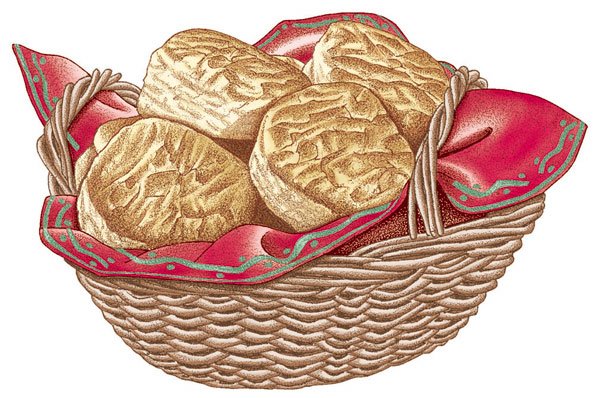As I write this, I am preparing to lead a tour of the
Intracoastal Waterway between Savannah, Ga. and Washington, D.C.
We’ll visit pre-Civil War plantations, forts and many of our the
capital’s monuments.
As I write this, I am preparing to lead a tour of the Intracoastal Waterway between Savannah, Ga. and Washington, D.C. We’ll visit pre-Civil War plantations, forts and many of our the capital’s monuments.
I lived for a time in Florida, and I grew to love some of the traditional foods, such as grits and grouper sandwiches, although I never learned to like boiled peanuts.
However, I have never been to this part of the south. The foods and customs will all be new to me. I have seen menus of some of the special meals we’ll be served. They contain some intriguing dishes that would be hard to find on a menu here in Central California.
For example, we’re having lunch at Magnolia’s restaurant in Charleston, S.C. This restaurant created its reputation using traditional low-country foods in imaginative ways.
Some of the menu items:
• Housemade pimiento cheese served with Charleston flatbread
• Housemade potato chips tossed with crumbled bleu cheese and scallions
• Grilled salmon filet (nothing new here … ) served with creamy white grits (THAT’s new to me)
• Smothered meatloaf sandwich with buttermilk mashed potatoes, white bread and brown gravy.
Interesting, don’t you think?
The same evening, we dine at Magnolia Plantation, and some of the items that catch my eye include:
• Sausage and ham biscuits with peach chutney
• Salad of field greens
• Home-style banana pudding
Then the next day, we have lunch at Middleton Plantation, and the buffet is planned to include:
• Slow roasted barbecued pork
• Southern fried chicken
• Southern collard greens
• Plantation Hoppin’ John
• and of course, Pecan pie
I have a few Southern cookbooks, so I looked up some of the traditional items to share with you. I’ll report back on the goodies, and the food aboard the Nantucket Clipper, when I return.
Grits Soufflé
adapted from The Gasparilla Cookbook
serves 4
Note: Grits can be hard to find in California. Grits are hominy which has been ground fine, and hominy is white corn treated with lye and dried. The Gasparilla Cookbook, published by the Junior League of Tampa, says “Many a transplanted Northerner who has taken to rice in all its forms will never, ever see the good of grits, but those who like them, sigh and call them ‘Georgia Ice Cream.'”
1 cup grits
2 cups water
1 cup milk
1/4 cup (1/2 stick) butter
1/2 lb. grated cheese
Salt to taste
Step 1: Preheat oven to 350 degrees F.
Step 2: Cook grits 10 minutes in water.
Step 3: Add milk, butter, cheese and salt.
Step 4: Pour into greased casserole dish and back 30 minutes.
Hopping John
(from Cross Creek Cookery by Marjorie Kinnan Rawlings, author of The Yearling)
serves 4
Note: this recipe calls for cow peas. I researched cow peas on the Web and concluded that black-eyed peas, more common here, would be a good substitute, if not identical. However, I couldn’t determine how white bacon differs from ordinary bacon. If you have any information about this, please let me know!
1 cup cow-peas
1/4 lb. white bacon, cut in slices
1 small onion, sliced
3 cups water
salt to taste
1/2 cup rice
Step 1: Boil together cow-peas, bacon, onion and salt in the water.
Step 2: Cook the rice separately.
Step 3: Add the fluffy rice to the peas and cook a few minutes more.
Serve with cornbread.
Cornbread
(adapted from the Quaker Corn Meal box)
9 3-inch squares
True Southern cornbread is not as sweet as this is, but we have used this recipe and like it.
1 1/4 cups flour
3/4 cup cornmeal
1/4 cup sugar
2 tsp. baking powder
1/2 tsp. salt
1 cup milk
1/4 cup vegetable oil
1 egg, beaten
Step 1: Heat oven to 400 degrees F. Grease a 9-inch square baking pan.
Step 2: Combine dry ingredients in a large bowl.
Step 3: Stir in the milk, oil and egg, mixing just until the dry ingredients are moistened. Batter should be lumpy.
Step 4: Pour into prepared pan.
Step 5: Bake 20 to 25 minutes, until golden brown and a pick inserted in the center comes out clean. Serve warm.
Buttermilk Biscuits
about 15 biscuits
Biscuits can be tricky. Once again, I have tried this recipe, and I know it works. It is not from a Southern cookbook, but from the New York Times Cookbook, by
Craig Claiborne. While Claiborne was the food editor of the Times from 1959 to 1987, he was born in Sunflower, Miss., and his memories of home cooking shaped his life.
2 cups sifted flour
1 tsp. salt
1 tsp. baking powder
1/2 tsp. soda
1/4 shortening or lard
3/4 cup buttermilk, approximately.
Step 1: Preheat oven to 425 degrees F.
Step 2: Sift or whisk together the dry ingredients.
Step 3: Cut in the shortening with a pastry blender or a fork until the mixture resembles coarse cornmeal.
Step 4: Add enough buttermilk, stirring lightly with a fork, to make a soft dough that separates from the sides of the bowl and forms a mound when stirred.
Step 5: Turn out onto a lightly floured board and knead about 30 seconds. Roll to 1/2 inch thickness and cut into rounds, using a sharp round cutter (a cutter with a dull edge, such as a drinking glass, will compress the sides and inhibit rising).
Step 6: Transfer to baking sheets and bake 12 to 15 minutes.














